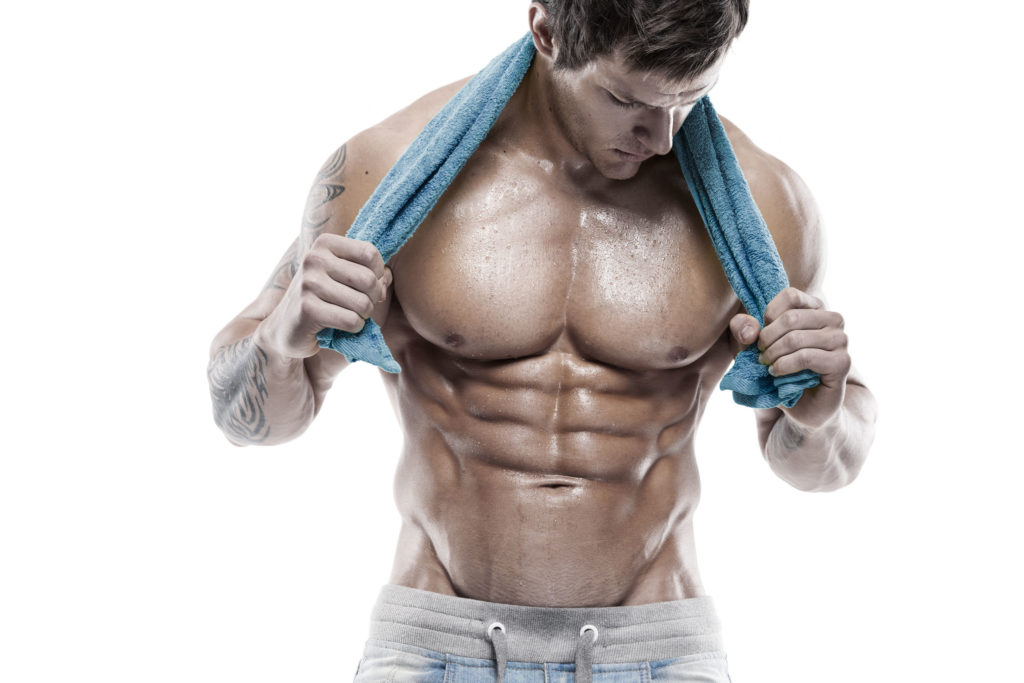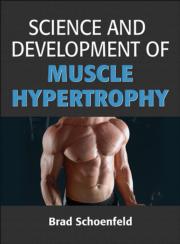This post is about training the pecs.
Sha-ZAM.

Full disclosure, I was going to use this picture as the main image for today’s article:

Copyright: wrangel / 123RF Stock Photo
However:
1. This guy’s pecs weren’t “pecy” enough.
2. Yellow peppers are gross.1
Every dude who lifts weights wants an impressive, well-defined chest.2
For men I think it’s pretty much engrained in our genetic code to A) miss the toilet seat when peeing and B) to want to train our chest whenever possible. In the most primal sense possible, we could make the case that a muscular looking chest is our version of a peacock spreading his feathers.
It’s a sign of masculinity, bravado, (perceived) sexual prowess, and encourages the ability to do this in public whenever the occasion arises…which, is all the time:
I am no different.
Throughout my lifting career I’ve always placed a premium on training my chest and it should also come as no surprise that 97% of the guys I’ve coached throughout the years have prioritized the same.
We’ve been programmed to think that barbell variations are the best way to build an impressive chest. And although I’d be remiss not to note that many guys with big bench press numbers do, in fact, have enviable pecs, I’d note there are far more guys with average (if not laughable, by powerlifting standards) bench press numbers who would make He-Man swoon with their chest development.
Having a 300 lb bench press – while baller and worthy of a fist-bump – isn’t a requirement for building respectable pecs.
Again, to reiterate, this is not to downplay the bench press.
Hoisting some heavy-ass weight off your chest, repeatedly, is never a bad approach. But if we take a look at the actual anatomy of the Pectoralis major muscle and it’s function(s) we can note why, from a developmental standpoint, dumbbells are almost always a better option.
Pectoralis major
Actions:
1. Flexion of humerus.
2. Adduction of humerus.
3. Medial rotation of humerus.
4. Cutting of diamonds (when maximal pecification is achieved).
NOTE: We could, also, divide the Pectoralis major into two separate “areas.” The sternal head, mostly responsible for humeral extension, as well as adduction, and the clavicular head which is mostly responsible for humeral flexion.
Barbell variations limit things because they don’t allow for any humeral adduction. This is why, if pec development is the goal, dumbbell variations are a better play because THEY ALLOW MORE ADDUCTION, GOSH! How many times do I have to tell you.
Regular, plain ol’ DB Bench Presses are fine and will get the job done. However, what kind of post would this be if all I did was say “go do some DB Bench Presses.”
Lame. That’s what.
So, here are some of my (other) favorite dumbbell variations that are (hopefully) new to most of you reading.
1. DB Press – Accentuated Eccentric
Nothing too revolutionary here. All I’m doing in this video is accentuating the lowering (eccentric) portion to help attenuate more muscle fiber damage and subsequent muscle growth.3
I like to keep people in the 3-5s range as far as the lowering portion is concerned and aim for 8-12 repetitions. A sneaky trick I’ll often implement is a MAX set on the last set. So it may look something like this:
Set #1 = 10 reps
Set #2 = 8 reps
Set #3 = MAX reps
But you can always use straight weight or a pyramid scheme or whatever. It’s all good.
2. DB 1-Arm (Offset) Press
This is a nice way to address any strength imbalances between one side and the other. Too, it adds an intense core-stability (rotary stability) component as well, as you have to fire all you have as to not fall off the bench.
3. DB Alternating Press
This is a classic variation I always revert back to. I like this one as it kinda-sorta emulates a 1-arm press. Plus, it requires a fair amount of scapular stability on the straight-arm side as you perform the set.
4. DB Elevator Press
This is a play on something Ben Bruno discussed with Goblet Squats not too long ago. Here, the idea is to lower the DB 1/4 of the way, then back up, then lower 1/2 down, then back up, then lower all the way down, then back up again.
That’s one rep.
It sucks, but in a “holy shit, my pecs are so juicy right now kind of way.”
I’ll often shoot for 6-10 repetitions.
5. DB “Reverse Batwing” Press
This variation is the counterpoint to Dan John’s Batwing Row exercise. Here, you’ll hold one DB a few inches above the chest as you perform all your repetitions on the other side.
Switch, and repeat on the opposite side.
Ouch.
6. DB Squeeze Press
This is probably my favorite DB exercise to hammer the pecs. Here you promote both actions of the pecs into one hybrid exercise.
The idea here is to squeeze the DBs together as you press up and down.
7. DB Press w/ Intraset Iso Holds
Hot off the presses – at least for me – I stole this one from Jim Smith of Diesel Strength & Conditioning.
The idea here is to, again, increase time under tension (TUT) in an effort to increase metabolic demand and muscular damage.
Start with a 10s isometric hold at top. Another 5s hold half-way down. And then another 5s hold a few inches above the chest. Then perform 8-10 repetitions.
If you really want to hate life, after you perform your reps, repeat the three separate iso-holds again on your last set.
8. DB Floor Flye – Hollow Position
This isn’t a press, but it’s still a very effective exercise to build the pectorals since it’s 100% adduction. I got this idea from strength coach Joel Seedman as it’s also a nice variation that hammers the core too.
Moreover, since it’s performed on the floor it can be considered a more “shoulder friendly” flye variation since it limits the ROM and keeps trainees out of the “danger zone.”
And there you go.
Now go pecify those pecs people.






